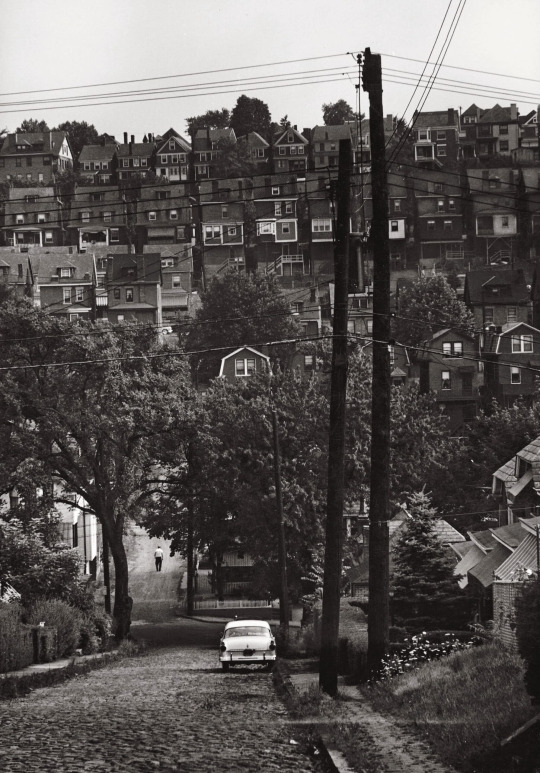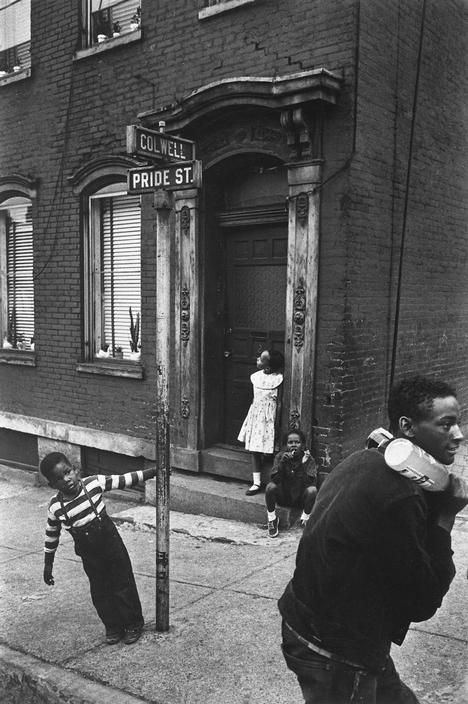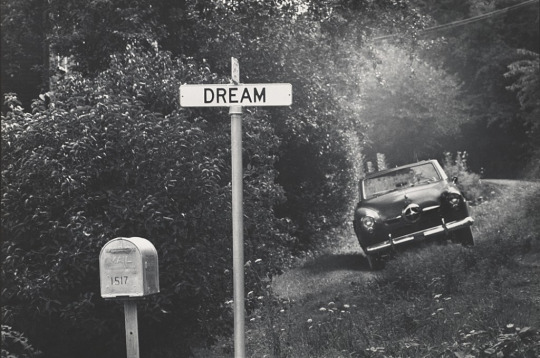#Stefan Lorant
Explore tagged Tumblr posts
Text

... flower power ...
"Our Lily" and "Arum Lily", by photographer Stefan Lorant, captured in 1937. An extraordinary comparison where photographer shows similar movements of ballet with flower.
#flower power#flower#beauty of movement#ballett#ballet dancer#our lily#arum lily#stefan lorant#black and white photography#photo art
82 notes
·
View notes
Text

Our Lily, Arum Lily, Stefan Lorant, 1937.
11 notes
·
View notes
Text

Fotografías de Stefan Lorant, 1937: "Our Lily / Arum Lily". Del libro "Chamberlain and the Beautiful Llama".
0 notes
Text

‘our lily, arum lily’, shot by stefan lorant, 1937
10 notes
·
View notes
Text

‘our lily, arum lily’, shot by stefan lorant, 1937
0 notes
Text
Geführt von Parfümfabrikant Helmut Spikker, hatten wir einen Kader, der für die zweite Liga ein sehr hohes Budget hatte. Mit meinen Torhütern Bernd Meier und Andreas Kronenberg ging ich in die Saison 2002/2003 unter Chefcoach Uwe Rapolder und Co- Uwe Fuchs. Die Hinrunde verlief nicht im Sinne von Helmut Spikker, sodass er in der Winterpause einen Trainerwechsel vornahm und den ehemaligen 1860 München Trainer Werner Lorant verpflichtete. Er brachte seinen Co Trainer Engin Firat mit, der für mich bis heute, mit seinem Wissen über alle Details eines Spielers, weltweit Infos wusste, was einer Datenbank gleichkam. So war er für mich auch der Kopf für unseren Erfolg, auch mit seiner Arbeitsweise mit den Jungs, trotz Cheftrainers Werner Lorant. Wir erreichten Platz 12 mit 40 Punkten und alle waren glücklich ein weiteres Jahr Teil der zweiten Bundesliga sein zu dürfen. Ich entschied mich für eine neue Aufgabe in Südkorea. Das Team: Lamine Cisse, Jan Velkoborsky, Michael Zepek, Darko Anic, Musemestre Bamba, Christian Mikolajczak, Stefan Fengler, Petar Djenic, Petar Vasiljevic, Everaldo Batista, Gledson, Sebastian Bönig, Zeljko Sopic, Reinhold Daschner, Marc Arnold, Patrick Dama, Krystian Prymula, Cyrille Bella, Marcus Feinbier, Marcel Rath, Samuel Ipoua, Ferhat Cerci, Maikel Renfurm, Tim Gorschlüter, Michael Rösele und Chiquinho. Verein Rot Weiss Ahlen Die Herrenmannschaft, damals noch LR Ahlen (1996-2006) wurde 2006 nach dem Abstieg aus der 2.Bundesliga Rückzug des Mäzen Helmut Spikker umbenannt in Rot Weiss Ahlen. Ahlen Ahlen liegt im westfälischen Münsterland im Norden von Nordrhein-Westfalen und ist die wirtschaftlich bedeutendste Stadt des Kreises Warendorf (Bundeswehrkaserne Warendorf). Regierungsbezirk ist Münster. Bekannt ist die Bartholomäus Kirche und Marienkirche in Ahlen. Zur Erinnerung an die Opfer des Holocaust im Dritten Reich die Ahlener Gedenkstele.
0 notes
Text
Photographer Research 2
Dream Streat by W. Eugene Smith, in his work, he took photos of Pittsburgh. He produced hundreds of photos for journalist and author Stefan Lorant's book to commemorate the city's bicentennial. He documented a vibrant industrial metropolis, its steel mills, its people, and its scenery. While working on this project, he was commissioned to spend only three weeks in Pittsburgh but ended up staying a year while compiling nearly 17 thousand photos. In his work, he wanted to portray not only Pittsburgh but also the mid-century, postwar America.
His works are quite beautiful, and they contain many old century pictures of what it was like back in the 1950. His work is very inspiring if I ever want to create some kind of project that involve the 1950 vibes.



4. Dream Street. Pittsburgh, 1955. | Magnum Photos Store
0 notes
Video
vimeo
Festival Corpus Comediantes from clauno dromo on Vimeo.
Festival Corpus Comediantes - Locura Pura Realizado para celebrar el 50 aniversario del Estudio Búsqueda de Pantomima-Teatro del 10 al 13 de noviembre de 2022
Por la organización del Estudio Búsqueda de Pantomima-Teatro A.C. Sigfrido Aguilar Sergio Langarica Janet M. Izzo
Registro, edición y realización audiovisual Michel Alzaga-Studio Inútil Cámara 2- Lars Uribe
Con profundo agradecimiento a La familia Villalpando Navarro Lars Uribe Estrella Labrada Michel Alzaga Cuauhtémoc Trejo Blú Azcué Ángela Olivia Vela Pavón
Y a las compañías de artistas participantes: Nahuales Callejeros - alumnos del Estudio Búsqueda, Cía. Tiatro de Chihuahua Jorge Mendoza y Joshua Franco. Cía. Escena Cuerda Floja de Chihuahua Cristina Córdova y José Sandoval Cía. Circonciente de Oaxaca Jorge Reza Cía. Impulsus Comediantes Pantomima-Teatro de Guanajuato Sergio Langarica y Lars Uribe Cía. Cabaret Capricho de Guadalajara Erandeni Nava, Violeta Castro, César Omar Barrios, Fernando Mánica.
Fue posible con el valioso apoyo de Kim Bancroft Gilles Ste-Croix Sereno Aguilar-Izzo Gail Tilmont Amy Oppenheimer Joyce Hartvigson Kim Bouchard Alan Craig Terri Rasmussen Shana Carroll Beth Binns Schoellkopf Yasko Endo Janet M. Izzo Stefan Grimberg Susan Duff Drew Richardson James R Moore Laurent Sallard Cheryl Lewis Lauren Stringer Chloe Walier Isaura Contreras Ríos Eva Bennati Vera Hoar Jessica Hentoff Audrey Crabtree Terry Lorant Joanna Sherman Joel Foisy Jenny McAvoy Zita Bettig Francisco Sentíes Avi Pryntz-Nadworny
Este festival fue producido en el territorio ancestral de la Confederación Guamare, en una tierra que ha sido protegida y honrada también por las naciones Otomís, Purépechas y otros pueblos originarios.
0 notes
Text
0 notes
Text
Photography: It’s Harder Than Ever To Identify A Manipulated Photo. Here’s Where To Start.
To Protect Yourself from Misinformation, Experts Suggest Analyzing Everything From How a Photograph is Lit to Where You’re Getting Your Information in the First Place.
— By Allie Yang | March 12, 2024

In one of the earliest examples of photo manipulation, the head of Abraham Lincoln is superimposed on the figure and background of an earlier print of John C. Calhoun. For almost a century, no one noticed the image was modified—until photojournalist Stefan Lorant noticed Lincoln's mole was on the wrong side of his face.Composite Print By William Pate-Courtesy Library of Congress
After months of speculation about Kate Middleton’s absence from public life, a digitally altered family photo released by Kensington Palace only fanned the flames as eagle-eyed observers identified details like a strange cuff and mismatched zipper.
Though the Princess of Wales later admitted to editing the photograph, experts say most times you should leave image verification to the pros.

The Original Print of the Engraving by A.H. Ritchie of John Calhoun, Circa 1852. With the help of modern reverse image search, it's easy to find information on past iterations of images like this one. Print By Alexander Hay Ritchie-Courtesy Library of Congress
“It's very easy to go way too far here and suddenly everything is suspicious,” says Hany Farid, a professor at University of California, Berkeley, who specializes in media forensics. “By eye, you’re not going to be able to figure out what's real with any reliability whatsoever.”
Meanwhile experts have special tools, including ���digital forensic techniques and resources like geolocation, satellite imagery, and sensor data to make sure we—and our audience—can trust what we’re seeing,” says Christopher Looft, coordinating producer of the visual verification unit at ABC News. “Generative artificial intelligence is advancing at such a rate that the ‘tells’ we’d look for a year ago are probably out of date by now.”
That said, if you’re worried about being misled by misinformation, these are some tips that experts say you can start using today.

What’s The Source?
Your first line of defense is questioning where a photograph comes from. Something posted by an individual, a business, or a political entity might be altered to make them look good, promote a product, or otherwise benefit them.
But what about trusted news outlets, which are businesses too? Farid says you can still rely on those with a history of objective coverage. “They're incentivized to get it right,” he says. When photo agencies had to notify customers to stop distributing the Kensington photo, it was “bad for business” as it hurts their credibility, Farid says.
“Ninety nine point nine percent of the time they get it right,” Farid says of trusted news organizations. “You may take issue with any perceived political bias, but these are serious people doing a serious job.” He adds that the standards these outlets must meet for publishing a photograph are far and above those of any an individual or commercial entity, if they have standards at all.
Beware of Hot Topics
Political fakes also run rampant, particularly in election years. There’s satire, Farid says, which is protected as political commentary—then there are robocalls using a presidential candidate’s voice, which could be illegal. It’s a fine line.
Conflicts are another charged topic. “In the fog of war, it's very hard to figure out what's going on. Emotions are running spectacularly high. And so infusing that with disinformation, fake images, makes things very messy,” Farid says. “Within days, we see fake images, fake audio, fake video, and then the real thing is being claimed as fake.”
Think About Lighting
One of the ways you can tell the Kensington photo wasn’t manipulated by AI is that “the lighting on their faces is consistent,” Farid says. It’s a detail that Mark Thiessen, a National Geographic staff photographer, is constantly thinking about.
He was able to answer which cheetah photo was generated by AI—a riddle that stumped many on our staff and our readers—thanks to decades of experience in lighting and photography.
Thiessen notes that while the two real photos had realistic lighting—one ambiently lit by the sun slightly to the right of the cheetah, the other captured with head-on flash—the AI cheetah had an unnatural, strong blue highlight in one eye. Blue isn’t necessarily a strange highlight color, especially outdoors when the eyes reflect the sky, but without any other blue hue in the picture, he says this was a dead giveaway.
“The photographer who taught me lighting back in college told me to look at every image and figure out how it’s lit—every movie scene, magazine shoots, commercials,” Thiessen says. “You can figure out how things are lit generally when looking at the eye—it’s reflective and round, it’s like a mirror of the lighting setup.”
Fact Check Yourself
If you see a photograph that’s giving you pause, Farid suggests searching to see if any research or articles have been published about it, or if other outlets like Snopes or FactCheck.org have investigated it. If you’re only seeing the image on community forums like Reddit, 4chan, and Twitter “you should probably just ignore it.”
“Many so-called ‘fakes’ aren’t necessarily fabrications, they’re just old images misleadingly passed off as new,” Looft says. “Reverse image search is an easy way to tell whether an image already exists. There are many options but TinEye has a great reverse search, and some other tools for those looking to go a little deeper.”
The Bigger Picture
The distinction between “photojournalist” and “photographer” has always been an important one, Thiessen says. For photojournalists, the content of the photo cannot be changed.
There’s a difference between standard editing practices—such as adjusting contrast levels from a raw file—and manipulation. Instead of shooting an object suspended by a fishing line and editing out the fishing line later, he says, “we’d figure out how to shoot it without a fishing line.”
When it comes to marketing or commercial use, however, those rules can be bent to allow editing in post-production. And as the line between promotional and editorial journalism in imagery becomes blurrier than ever, Thiessen says the delineation of photojournalism is critical.
Rather than relying on a handout from the royal family, or a brand, or anyone else that has their own interests, it’s all the more important to have photojournalists we can trust not to manipulate photos. Even better, he says, is to have several independent journalists attending the same event so they can check each other.
“If we erode trust in the very institutions, the media and academics and the scientists and the government, we are in a lot of trouble as a society,” Farid adds. “Because when that happens, the very mechanisms that we have to talk about a global health crisis, global climate change, elections, integrity, are gone.”
#Photography#Documentry Photography#Photography Techniques#Innovation#Information Technology& Telecommunications#Immaging Technology#Manipulated Photos#Harder to Identify#Misinformation#Experts’ Suggestion#Analysis#Source#Hot Topics#Facts Checks
0 notes
Text

Stefan Lorant's wonderful shot from 1937 entitled "Our Lily, Arum Lily". In his brilliant shots, this pioneer of photography sought similarities between the subjects photographed and the realities of everyday life that surrounded him.
6K notes
·
View notes




